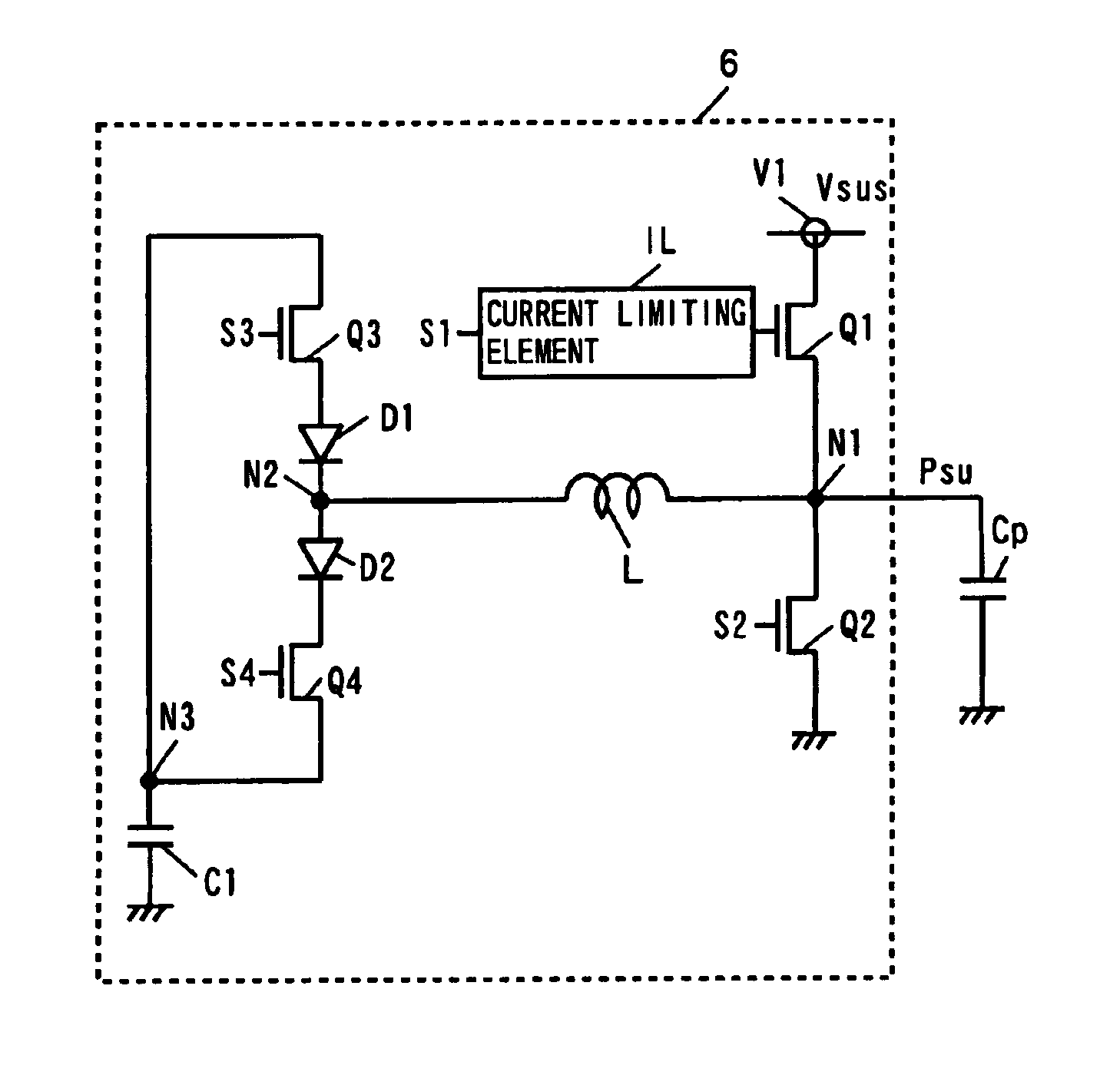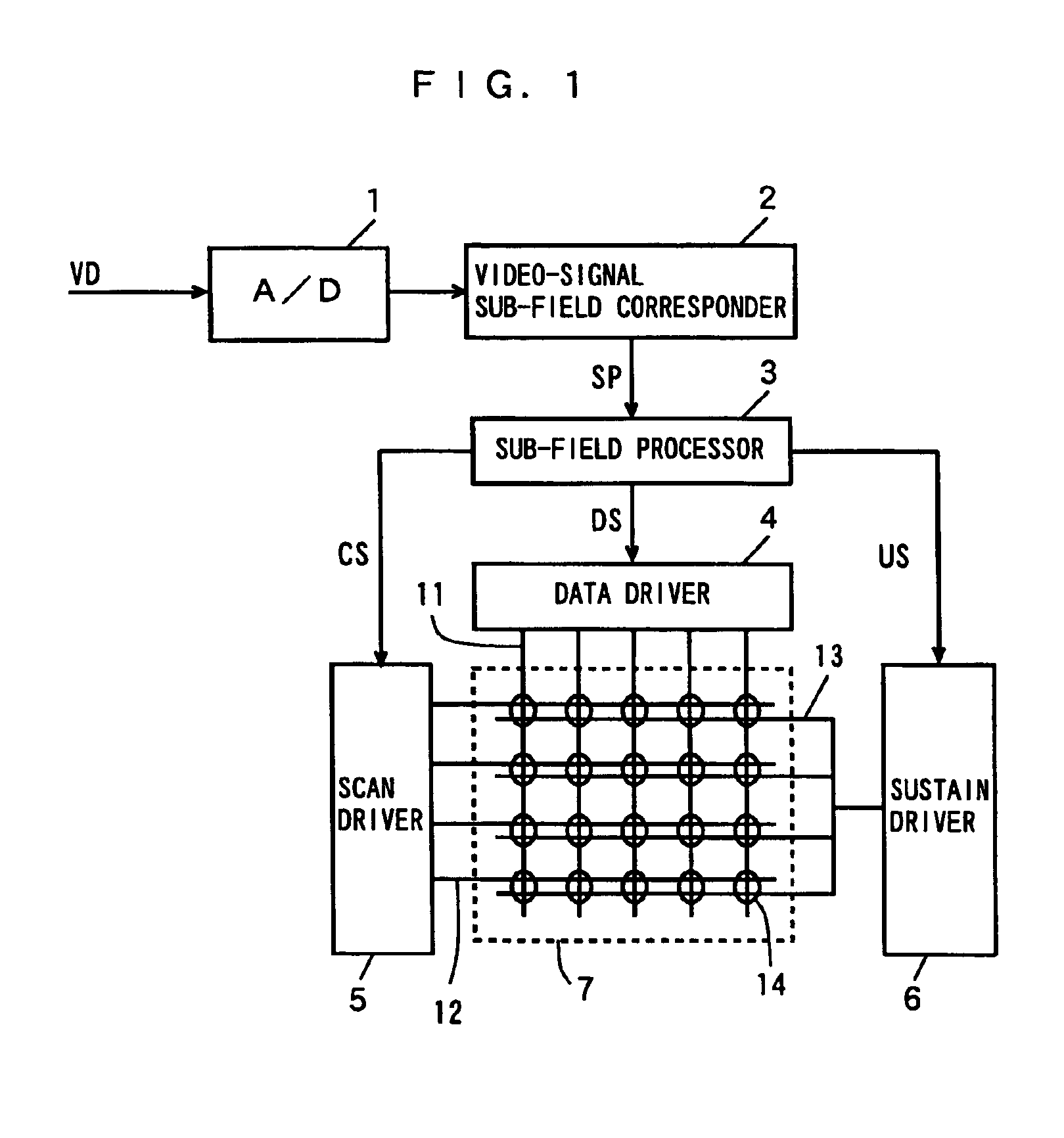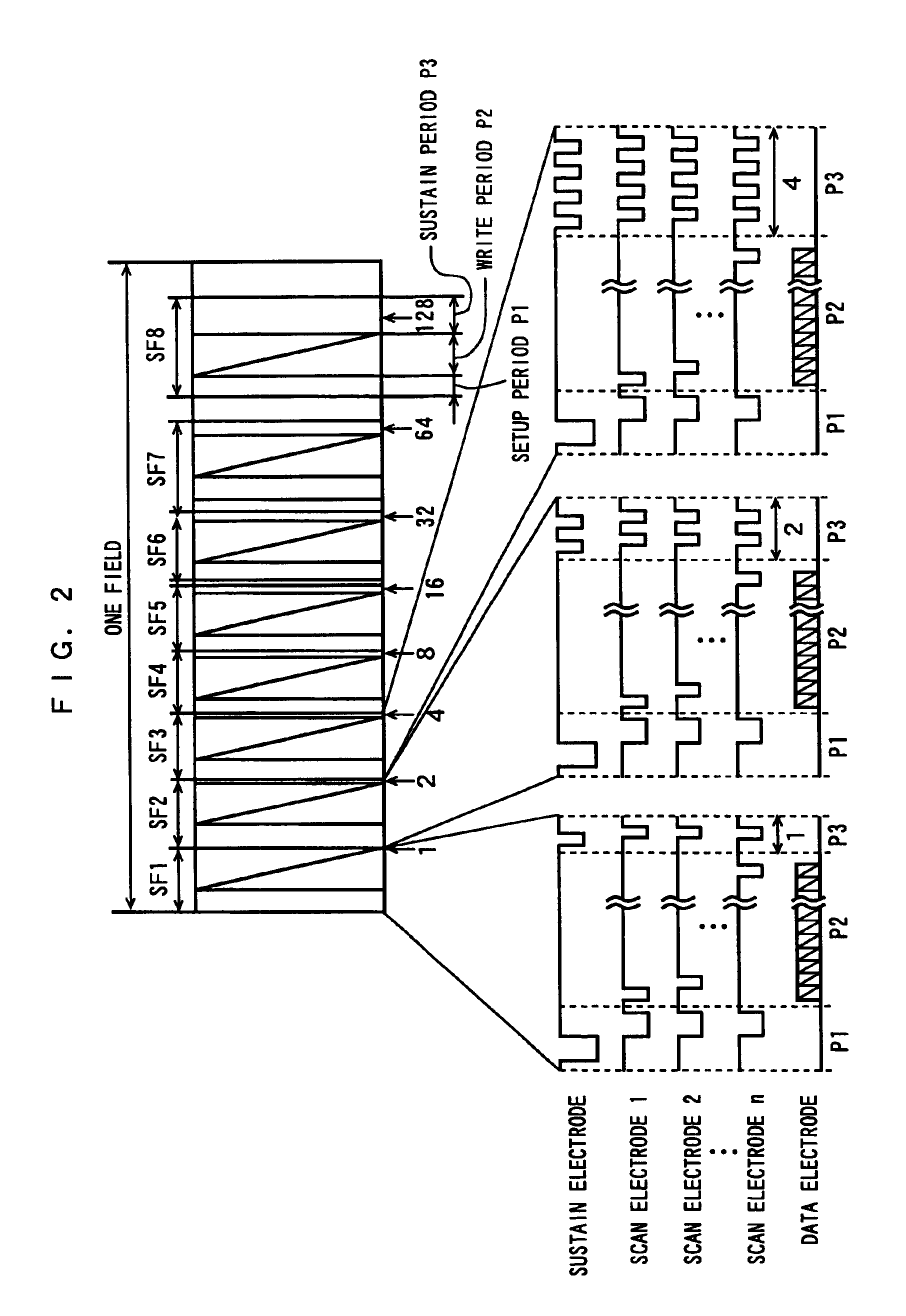Display and method for driving the same
a technology applied in the field of display and driving method, can solve the problems of unstable discharge, inability to repeatedly stably induce discharge, and saturation of ultraviolet rays with respect, and achieve the effect of improving luminous efficiency
- Summary
- Abstract
- Description
- Claims
- Application Information
AI Technical Summary
Benefits of technology
Problems solved by technology
Method used
Image
Examples
first embodiment
[0165]An AC-type plasma display device will be described as an example of a display device according to the present invention. FIG. 1 is a block diagram showing the configuration of the plasma display device according to the present invention.
[0166]The plasma display device shown in FIG. 1 comprises an A / D converter (an analog-to-digital converter) 1, a video signal / sub-field corresponder 2, a sub-field processor 3, a data driver 4, a scan driver 5, a sustain driver 6, and a PDP (Plasma Display Panel) 7.
[0167]A video signal VD is inputted to the A / D converter 1. The A / D converter 1 converts the analog video signal VD into digital image data, and outputs the digital image data to the video signal / sub-field corresponder 2. The video signal / sub-field corresponder 2 divides one field into a plurality of sub-fields and displays the sub-fields. Therefore, image data SP for each of the sub-fields is generated from the image data in the one field, and is outputted to the sub-field processor...
second embodiment
[0279]The present embodiment is the same as the second embodiment except that the scan driver 5a and the sustain driver 6a correspond to a driving circuit, first to third driving circuits and a final driving circuit, the sub-field processor 3a corresponds to a control circuit, the capacitor C2 corresponds to a second capacitive element, the variable voltage source VR corresponds to a voltage source and a variable voltage source, the voltage control circuit 9 corresponds to a voltage control circuit, the capacitor C2, the coil L1, the transistors Q5 and Q6, the diode D3, and the variable voltage source VR correspond to a second driving circuit, and a transistor Q1, a current-limiting element IL and a power supply terminal V1 correspond to a third driving circuit.
[0280]FIG. 23 is a timing chart showing the operation in a sustain time period of the sustain driver 6a shown in FIG. 22. FIG. 23 illustrates a voltage at the node N1 shown in FIG. 22, discharge intensity LR in a PDP 7, and c...
third embodiment
[0310]The voltage control circuit 9a respectively outputs a voltage control signal VC for controlling an output voltage of a variable voltage source in a scan driver 5a and a voltage control signal VU for controlling an output voltage of a variable voltage source VR in a sustain driver 6a to the scan driver 5a and the sustain driver 6a in response to the minimal value signals MC and MU. The subsequent operations of the scan driver 5a and the sustain driver 6a and an operation for controlling the waveform of the sustain pulse depending on a lighting rate for each sub-field are the same as those in the third embodiment and hence, the detailed description thereof is omitted.
[0311]The present embodiment is the same as the third embodiment except that the voltage control circuit 9a corresponds to a voltage control circuit, and the minimal value detectors 10a and 10b correspond to a potential detection circuit.
[0312]An operation for controlling a voltage of a sustain pulse depending on a ...
PUM
 Login to View More
Login to View More Abstract
Description
Claims
Application Information
 Login to View More
Login to View More - R&D
- Intellectual Property
- Life Sciences
- Materials
- Tech Scout
- Unparalleled Data Quality
- Higher Quality Content
- 60% Fewer Hallucinations
Browse by: Latest US Patents, China's latest patents, Technical Efficacy Thesaurus, Application Domain, Technology Topic, Popular Technical Reports.
© 2025 PatSnap. All rights reserved.Legal|Privacy policy|Modern Slavery Act Transparency Statement|Sitemap|About US| Contact US: help@patsnap.com



